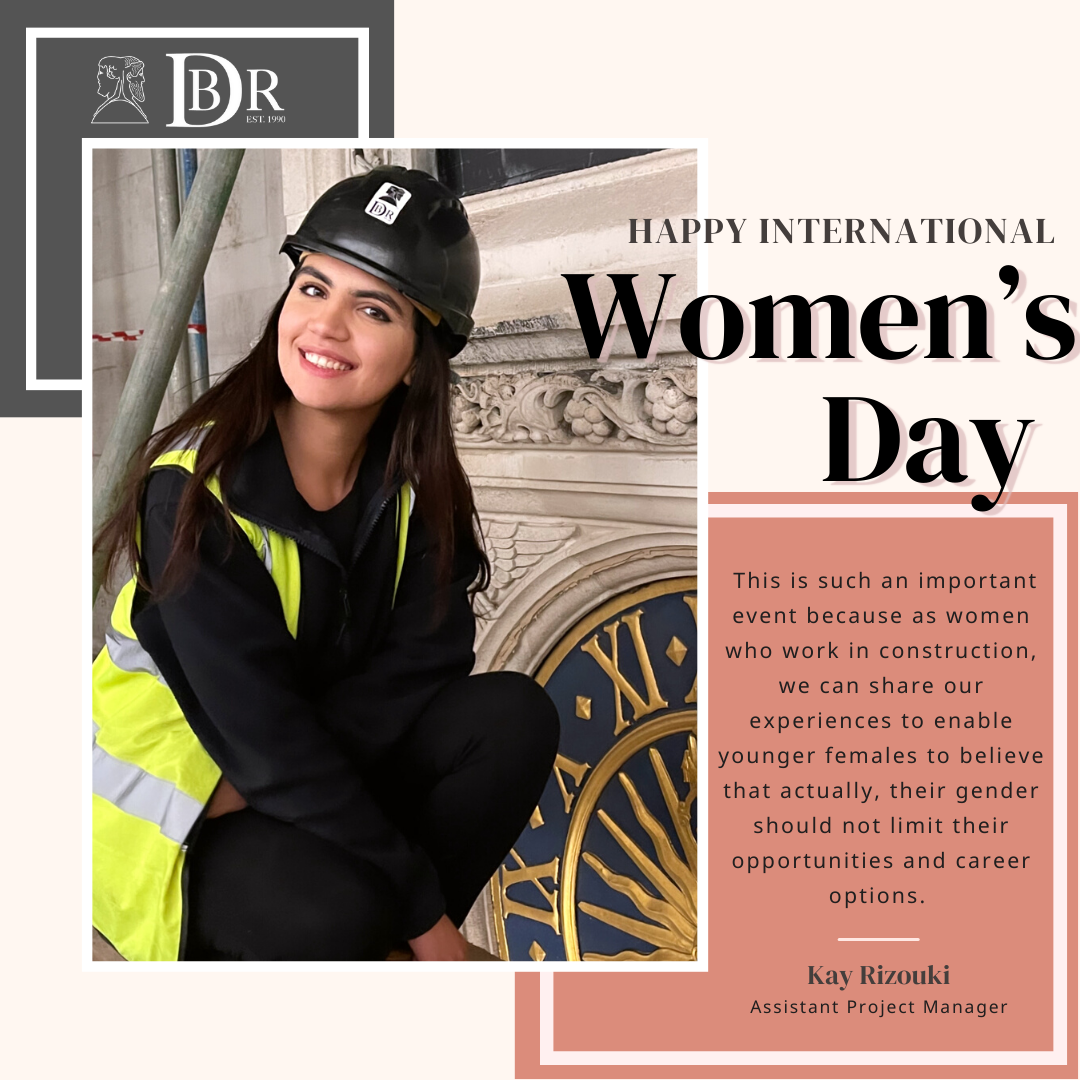

How did you get into the industry?
Kay: I completed my Bachelor’s and Master’s degrees in civil and structural engineering. I then applied to work as a site engineer for a year before deciding to work as a construction manager.
What led you to want to work in the industry?
Kay: I have always enjoyed maths and numbers. When I was picking out of the university courses through UCAS, I felt this career would suit my personality and it’s something I would enjoy doing forever.
Do you feel that women are fairly represented in the industry? Have perceptions changed?
Kay: I believe there has been an increase in of the number of women working in construction over the last 10 years. I think that the events that promote ‘women in construction’ play a big role in this. I have witnessed this by attending events and seeing influential posts on LinkedIn which both play a huge role to giving a more fair and accurate representation of women’s achievements in construction.
How could the industry attract more women?
Kay: By practicing gender equal opportunities in each and every construction company. By hosting and attending ‘women in construction’ events which will give the company an opportunity to meet women working in the field and be able to witness their achievements.
What’s the one piece of advice you would give to women thinking about pursuing a career in the construction industry?
Kay: Give it a go. You never know until you try! I was a little nervous at first, but I turned out to enjoy it very much.
What are your views on events like International Women’s Day?
Kay: This is such an important event because as women who work in construction, we can share our experiences to enable younger females to believe that actually, their gender should not limit their opportunities and career options.
Describe a typical day in your job.
Kay: I start at 8am, quickly skim through unread emails for a few minutes to make sure I am up to date. The most important part of this short task is that any operations that I need to organise for the rest of the day are sorted first thing. Then I go for a walk around site to make sure the right job tasks are being prioritised and ensuring health and safety is being practiced. Normally my walk ends with a to-do list for my colleagues and myself. I then get on with teams calls and on-site meetings to discuss design and delivery. Throughout the day, I will keep checking-in on site to ensure everything runs smoothly which involves a lot of telephone calls and WhatsApp group messages! Towards the end of the day, site operations would have been completed and I get a good opportunity to close-out my to-do list through some quiet time in the site office.
What’s your favourite project you’ve worked on?
Kay: My favourite would be my current project at the Natural History Museum, which is a 1-year, £10M+ restoration and conservation project. This project involves the replacement of roofing, glazing, flooring, M&E and terracotta cleaning & repair works. An extremely interesting project which keeps on giving and perfect for DBR!
Executive director, Adrian Attwood commented on International Woman’s Day, “DBR are very active in recruiting and promoting women into the construction industry and within our field of historic building conservation. Over 30% of our project managers are women, all of who are role models for encouraging greater diversity, and whose contribution to delivering complex conservation projects is exemplary.”